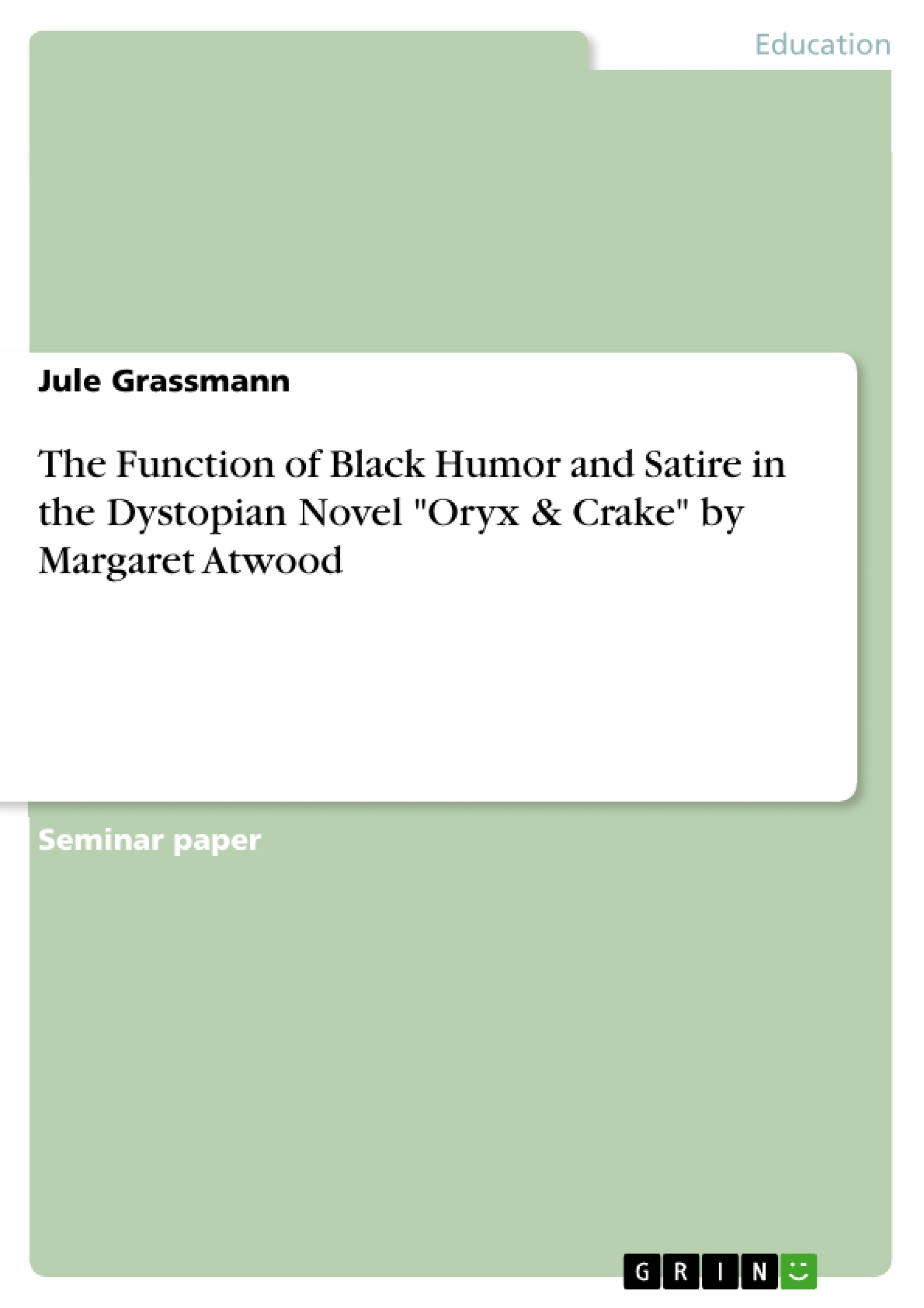This essay sets out to analyze Margaret Atwood’s use of black humor and satire in her novel "Oryx and Crake". Furthermore, it examines the function of such. Especially this essay looks at Atwood’s intention to provide a satiric tone and black humor and shows that they are based on social observations and concerns that are evident in the early twenty-first century.
To achieve this, the paper is structured into two main chapters. In the first chapter on "Black Humor and Satire" the author gives an overview of these terms, serving as a framework for further investigations. Additionally, the paper deals with laughter, to show which kind of laughter derives from Atwood's humor. In the next chapter on "Observations on Black Humor and Satire in Oryx and Crake", the paper focuses on the satirical tone and the black humor in the novel, based on the author's own reception of the text.
Inhaltsverzeichnis (Table of Contents)
- Introduction
- Black Humor and Satire
- Definition
- Kinds of Humor-Based Laughter
- Observations on Black Humor and Satire in Oryx and Crake
- Misuse of science/genetic engineering
- Global Warming
- Division of society
- Function
- Conclusion
Zielsetzung und Themenschwerpunkte (Objectives and Key Themes)
This essay analyzes Margaret Atwood's use of black humor and satire in her novel Oryx and Crake. It examines the function of such, particularly focusing on Atwood's intention to provide a satiric tone and black humor based on social observations and concerns evident in the early twenty-first century.
- The use of black humor and satire in dystopian fiction.
- The function of humor as a coping mechanism in dire situations.
- The critique of contemporary society through satire and dark humor.
- The exploration of social and ethical concerns related to scientific advancements.
- The role of humor in raising awareness about pressing societal issues.
Zusammenfassung der Kapitel (Chapter Summaries)
The first chapter provides an overview of black humor and satire, serving as a framework for the analysis. It explores the definitions of these terms and delves into different kinds of laughter that stem from humor.
The second chapter examines the satirical tone and black humor in Oryx and Crake. It explores how Atwood uses these elements to critique specific aspects of contemporary society, including the misuse of science, global warming, and social divisions.
Schlüsselwörter (Keywords)
The primary keywords and focus topics of the text include black humor, satire, dystopian fiction, Oryx and Crake, Margaret Atwood, social critique, contemporary society, genetic engineering, global warming, social divisions, and the function of humor.
- Quote paper
- Jule Grassmann (Author), 2016, The Function of Black Humor and Satire in the Dystopian Novel "Oryx & Crake" by Margaret Atwood, Munich, GRIN Verlag, https://www.grin.com/document/354695



